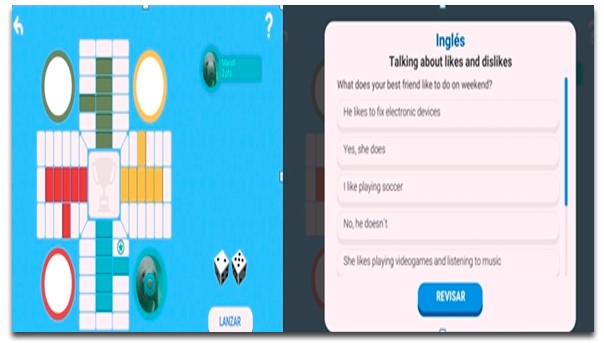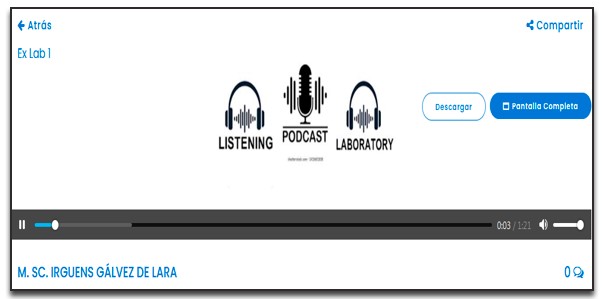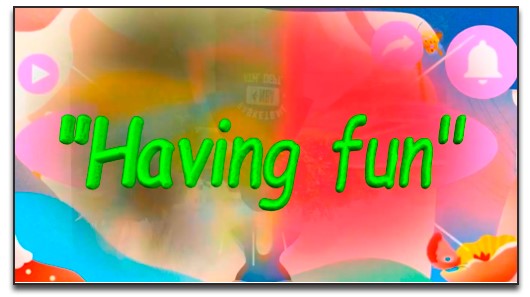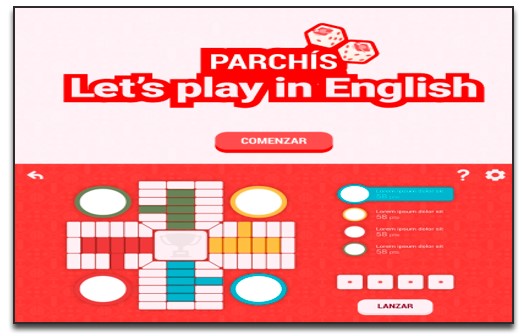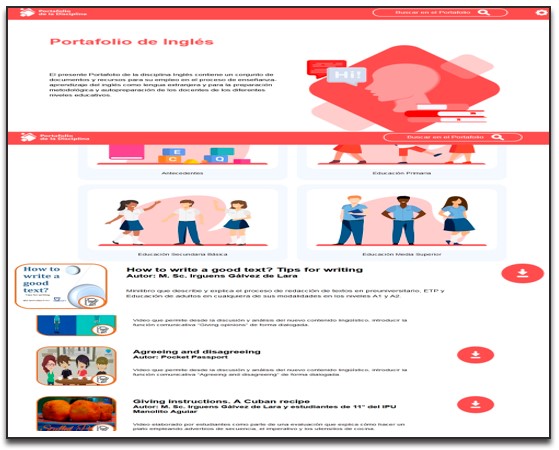Mi SciELO
Servicios Personalizados
Articulo
Indicadores
-
 Citado por SciELO
Citado por SciELO
Links relacionados
-
 Similares en
SciELO
Similares en
SciELO
Compartir
Varona. Revista Científico Metodológica
versión On-line ISSN 1992-8238
Varona no.79 La Habana ene.-abr. 2024 Epub 13-Ene-2024
Creativity and talent
Technological didactic aids for self-learning of English in Cuba
2Universidad de Ciencias Pedagógicas Enrique José Varona. La Habana, Cuba
Using electronic devices has increased in the last ten years in Cuba, especially for those who are named digital natives and even for those who are named digital immigrants too. This article is aimed at proposing some technological didactic aids for self-learning of English in Cuba. Several scientific methods such as: documentary analysis, systematization and modeling were carried out to systematize theoretical and methodological foundation underlying the design and use of technological didactic materials for self-learning of English; to describe the initial and current state of self-learning of English skills, as well as the didactic materials students access to and to design the proposal. As a result, a set of technological didactic materials was designed for self-managed learning of English in Cuba for different educational levels. Those aids contribute to self-learning of English in Cuba which increases motivation in learning by doing it.
Key words: communicative competence; educative multiplatform; electronic devices; learning styles; flipped classroom
Introduction
English language teaching and learning (ELTL) is a process which starts at early ages and finishes in higher education. As part of the Third Educational Improving, which is taking place at this moment in Cuba, new syllabuses, methods of teaching and learning, as well as materials are being updated in order to achieve a high-quality education.
In addition, in the last decade there has been a significant increase of electronic devices in Cuba such as: mobiles devices, computers and tablets. Those devices have made possible the access to Internet services and any other technological resources, especially by teenagers who grew up surrounded by those electronic devices. That is the reason why they are named digital natives, as they are good at technological language.
Consequently, this has favored new tendencies in educational matters. Thus, new student-center methodologies have arisen which have changed the way students learn. One of those new tendencies is the flipped classroom approach. This is a pedagogical model in which traditional learning and its activities are reformed. Lag and Sæle (2019) consider that it is a model in which the activities traditionally done by students outside class (problem-solving) are moved into the classroom session, whereas what is traditionally done in class (expository, information transmission teaching) is done outside and prior to class. Furthermore, Awidi and Paynter (2019) point out that instructional lecture material is delivered online prior to class time which reveals more efficient use of technological didactic materials. Moreover, Alarcón and Alarcón (2021) argue that technology is paramount in the flipped classroom as it promotes self-learning.
In this sense, technological didactic aids play an important role in this process as they allow students with information to process and practice contents from syllabuses. For that reason, it is important to start by defining what a didactic aid is. Area (2020) states that didactic aids are physical or digital objects, created to generate learning in a certain educational situation. But there are some variables conditioning the use of didactic materials such as: teaching methodology, availability of resources and the activities developed. (Fuhs and Bock, 2018)
This research assumes the definition provided by Area (2020), but the term technological is added to it as it proposes to create digital products to be used by means of electronic devices. Technological didactic aids can be classified as: audiovisual or computer materials. The audiovisual ones involve a way of multisensory communication that generates new codes which influence the directions and ways of perception (Real, 2019). Whereas, the computer materials are composed of a set of computer programs called software that allow to use them by means of an operating system.
Using those technological didactic aids favors self-learning. Self-learning is the framework in which students take initiative and responsibility for their own learning. Additionally, it can take place both inside and outside the classroom, as Garrison (1997) and Svein-Leeng (2020) highlight. Moreover, Solórzano (2020) states that it is the process that allow learners to gather, process and convey knowledge. Ramos (2020) adds that it is also a process of knowledge construction in an active way taking into account students´ learning aims. And finally, Cabrera (2020) argues that this process is mediated by the conscious usage of technological devices.
Nevertheless, the goal of ELTL is to develop communicative competence. This term is defined by Font (2006) as an individual´s performance in his verbal and non-verbal activity in real communicative situations involving the interaction between two or more people, or between a person and an aural or written text, in correspondence with a given social context. For that reason, the methodological conception in ELTL assumed in Cuba is the Communicative Language Teaching.
It implies that the main principle in this process is the communicability one. Understanding this principle supposes using language as a vehicle and as a means of communication (Antich, 1987). Another principle to be taken into consideration is the sensory-direct perception, one that involves using didactic aids that facilitate learning, especially by designing authentic materials that include different learning styles which depend on the students´ perceptive preferences as Marsiglia-Fuentes (2019) highlights.
In addition, there is a set of stages, known as learning cycle that makes it possible to identify and transform the linguistic habits as well as the elements of the communicative competence into language skills.
Consequently, in Cuba, there are two models that have been contextualized to the educational reality: the model designed by Font (2006) for middle face-to-face education which is taken as stance in this study.
On the other hand, Cuba has developed an online free multiplatform called Cubaeduca. It contains different services that allow users (students, teachers and families) to access to a wide variety of interactions in ELTL. The main service is “Curricular” that contains all the contents from the general curriculum. This multiplatform is managed by CINESOFT, a company that belongs to the Department of Education. However, it is also a set of offline products designed by CINESOFT that are delivered to all the local areas in Cuba and do not require internet access but having an electronic device.
Based on the previous statement, the following hypothesis is declared: self-learning of English in Cuba could be developed by means of a conscious, scientific and ethical use of technological devices, being considered as the instruction and educative channel in the didactic process. The objective of this article is to propose some technological didactic aids for self-learning of English in Cuba.
Material and methods
This research undertook the materialist-dialectical paradigm as a general conception. It also was considered as descriptive non-experimental research.
The empirical scientific method: document study was conducted. It favored the process of getting information from syllabuses and any other official documents to design the technological didactic aids.
In addition, some theoretical scientific methods were carried out. They permitted to review the literature and systematize the theoretical and methodological foundations underlying the process of designing technological didactic aids for self-learning of English. Besides, modeling was useful in the design of aids.
This research has been implemented at Manolito Aguiar High school since 2021 and the proposal is being applied at this moment with a population of 200 students from 12th grade and the sample is formed by the population too. In the case of teachers, the population is 1.
Results
To start with, the document study carried out showed that the technological-didactic aids proposed in those previous researches do not take into account the principle of communicability nor the Communicative Language Teaching as the main conception of the ELTL. Besides, most of them use another model different from the one proposed by Font which is assumed in Cuba. And also, those aids do not include the educative aspect which is closely related to the instructional aspect too.
Likewise, the experience at school revealed the necessity technological-didactic aids to contribute to self-learning of English due to the fact that the main technological aids at school are some mobile applications such as: dictionaries or social networking in face-to-face education.
As a preliminary result of this research, the modeling as a scientific method made it possible to design a set of technological didactic for self-learning of English in Cuba for different levels of Education. Those are shown below.
- Electronic book: Perspectives 1 (figure 1)
- Lessons at Cubaeduca multiplatform (figure 2) containing videos, images, audios, documents and interactive activities.
-Videogames: Parcheesi game (figure 3) “ Adiéstrate ” “ Alístate ” and “ Entrénate ”.
- Recordings (figure 4): Lab exercises, Listening, Podcastsections at Cubaeduca multiplatform
- Audiovisual series: Having fun. (Figure 5)
- Videogame (figure 6): Let´s play in English
-Portfolio of English 2 (figure 7):
Discussion
The results of this research are being implemented in the educational system. But it is important to consider that, all those materials take into account the development of students´ communicative competence as well as the principles of ELTL and students´ styles. Also, they help students develop self-learning skills according to the principles and methodologies assumed that allow students communicate in English.
Those technological-didactic aids assume the principle of communicability (Antich, 1987) as the main principle in ELTL. Moreover, there is a substitution of the trilogy form, meaning and use for use, meaning and form.
Furthermore, most the technological didactic aids for ELTL consulted in this research are focused on the linguistic dimension of the communicative competence but those the aids proposed in this study are focused on all the dimensions which is put into practice by applying the learning cycle designed by Font (2006).
Also, it is important to say that the proposal of this research takes into account the integration between the instructional and educative which is an indivisible unity. This is something different from the proposal made by Real (2019).
From a technological point of view, those technological-didactic aids that have been proposed in this research, do not require Internet access or are free if Internet access is required because they are exported in HTML which is more feasible for Cuban students, teachers or families.
Generally speaking, the pedagogical, psychological, didactical and technological foundations are integrated in those technological-didactic aids proposed which are described below:
The electronic book is for tenth graders in High school, 1st year students from Professional-Technical Education, Pedagogical Schools and A2 level in language schools. It is an application that works on computers and it contains images, audios, dialogs and interactive activities as well as some learning strategies and sections that allow students self-manage their learning of English by following the different stages of the learning cycle. Internet access is not required. This technological-didactic aid can be used at school or even at home.
The lessons are technological didactic aids that correspond to the level and contents from every syllabus. They have a didactic structure similar to the lessons in face-to-face courses but they contain audios, videos, power points, documents, interactive activity that allow learners to self-assess their knowledge and self-manage their learning process. They can be accessed at cubaeduca.cu and internet access is required but it is free. As part of the lessons there are some learning activities, training sessions and several materials that complement them. They work on both computers and mobile devices.
The videogame is a series of three Parcheesi games for elementary education, basic education and high school. Different questions from all the subjects in each degree of the educational levels are combined in this material which is an application that can be used on computers or mobile devices.
The different recordings include: lab exercises, listening tasks and podcasts that reinforce the contents from the lessons at Cubaeduca and develop self-managed skills. Among the materials proposed, lab exercises are one of the activities that allow students to practice listening, grammar, vocabulary, pronunciation and interaction. But also they allow learners to develop self-assess their progress as the audios provide a feedback. Listening activities favor the practice of listening skills and integrate them with other language skills. Those recordings can be used during the controlled, semi controlled and integrative communicative practices of the learning cycle. They work freely with internet access at cubaeduca.cu by using a mobile device or a computer.
The audiovisual series: Having fun is aimed at preschool education. It is intended for children from three to five years old. It can be watched on a mobile device or a computer too. It contains three chapters with the main basic communicative functions children at those ages are supposed to know.
The Parcheesi game: Let´s play in English is aimed at A1 and A2 levels according to the CEFR. It contains 98 questions that include audios, images and readings to practice communication.
The Portfolio is software that contains different lessons, audios, videos and documents (for each educational level) that the teachers download and give to their students. It doesn’t need Internet access.
The implementation of the technological didactic aids showed offers some advantages for the teaching learning process of English; for example, they allow the students to:
Analyze meaning-use-linguistic form used to convey messages.
Search specific information that favors a greater independence on knowledge appropriation.
Listen to authentic models of communication.
Interact with oral and written texts.
Get involved in a process of logical and analytical thinking at interpreting texts.
Practice grammatical forms and lexical areas.
Repeat phonetic and phonological patterns.
Self-assess themselves as they are able to solve a communicative problem or not, using their own style and strategies.
Develop meta-cognitive skills.
Encourage motivation.
Based on the previous statement, and as a conclusion, the authors declare that the correct use of technological didactic aids in the teaching learning process of English as a foreign language, encourage the students to learn how to learn, which is an alternative to self-learning.
On the other hand, the validation of those aids will be conducted by specialist´ consultation and the stated process will take place at the end of the current course. Different specialists who are Doctors in Pedagogical Sciences or are considered specialists in the field of technology will be surveyed to assess the proposal as well as to provide methodological recommendations for the final outcomes.
Referencias bibliográficas
Alarcón Díaz, D. & Alarcón Díaz, O. (2021) The inverted classroom as a learning strategy. Conrado, 17(80). http://scielo.sld.cu/scielo.php?script=sci_arttext&pid=S1990-86442021000300152 [ Links ]
Antich de León, R. (1987) Metodología de la enseñanza de lenguas extranjeras. Pueblo y Educación. [ Links ]
Awidi, T. & Paynter, M. (2019) The impact of a flipped classroom approach on student learning experience. Computers and Education, 128, 269-283. https://doi.org/10.1016/j.compedu.2018.09.013 [ Links ]
Area, M. et al. (2020) Escuel@ Digit@l Los materiales didácticos en la red. In The Digital Transformation of Instructional Materials. Views and Practices of Teachers, Families and Editors, Teach know Learn, 28, 1661-1685. https://doi.org/10.1007 [ Links ]
Cabrera, Y., et al. (2020) Habilidades de aprender en los estudiantes de medicina desde la percepción de los profesores. Medisur. 18 (4), 621-630. http://scielo.sld.cu/scielo.php?script=sci_abstract&pid=S1727-897X2020000400621&lng=es&nrm=iso&tlng=es [ Links ]
Font, S. (2006) Metodología para la asignatura inglés en la secundaria básica desde una concepción problémica del enfoque comunicativo. Tesis doctoral. UCPEJV. https://curricular.cubaeduca.cu/subject-content/content-info?id=115 [ Links ]
Fuhs, E. & Bock, A. (2018) The Palagrave handbook of textbook studies. Palagrave Macmillan. https://scholar.google.com/scholar_lookup?title=The%20Palgrave%20handbook%20of%20textbook%20studies&publication_year=2018 [ Links ]
Garrison, D. (1997) Self-directed learning: toward a comprehensive model. Adult Education Quartely, 48(1), 18-33. https://scholar.google.com/scholar_lookup?title=Self-directed%20learning%3A%20toward%20a%20comprehensive%20model&author=D.%20R.%20Garrison&publication_year=1997 [ Links ]
Lag, T. & Sæle, G. (2019) Does the Flipped Classroom Improve Students Learning and Satisfaction? A systematic Review and Meta-Analysis. AERA. https://doi.org/10.1177/2332858419870489 [ Links ]
Marsiglia-Fuentes, R. (2019) Teaching strategies and learning styles an approach to the case of the degree in education of the University of Cartagena. Formación Universitaria, 13 (1). https://www.scielo.cl/scielo.php?script=sci_arttext&pid=S0718-50062020000100027 [ Links ]
Ramos, C. et al. (2020) Autogestión del aprendizaje del universitario: un aporte en su construcción teórica. Espacios, 41 (18). https://www.researchgate.net/publication/341590895_Autogestion_del_aprendizaje_del_universitario_un_aporte_en_su_construccion_teorica [ Links ]
Solórzano, E. et al. (2020) La gestión del conocimiento como nodo formativo de estudiantes y docentes de la educación. Didáctica y educación, 115 (5). 52-66. https://revistas.ult.edu.cu/index.php/didascalia/article/view/971 [ Links ]
Svein-Leeng, H. (2020) Self-Directed Learning: A core concept in Adult Education. Education Research international. Vol 2020. ID-3816132. https://doi.org/10.1155/2020/3816132 [ Links ]
Real, C. (2019) Materiales Didácticos Digitales: Un recurso innovador en la docencia del SXXI. 3C, TIC. https://3ciencias.com/articulos/articulo/materiales-didacticos-digitales-un-recurso-innovador-en-la-docencia-del-siglo-xxi/ [ Links ]
Received: November 23, 2023; Accepted: December 14, 2023











 texto en
texto en 



